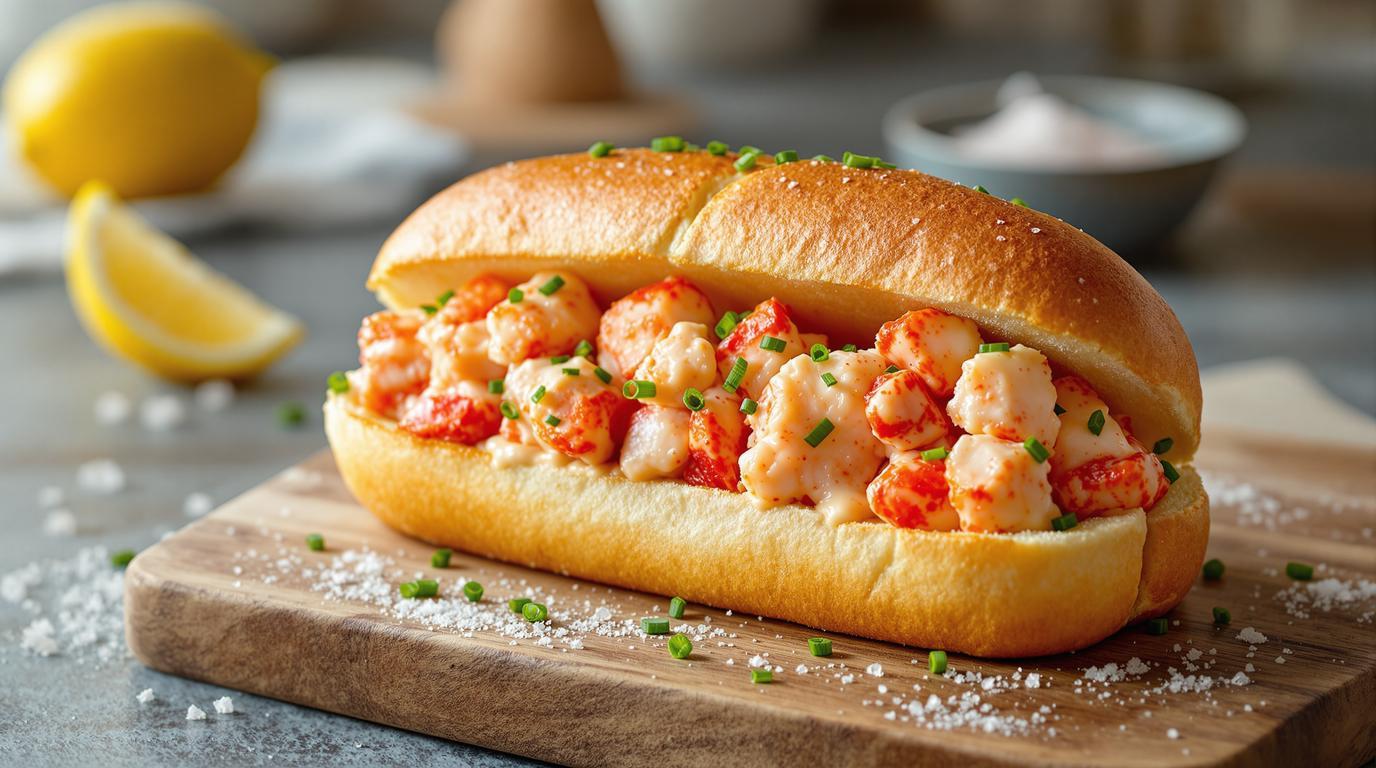There’s something magical about the way a proper Maine lobster roll transports you to weathered docks and salt-sprayed shores. Growing up, my grandfather would take me to a tiny shack in Kennebunkport where the owner, Bill, insisted you could taste the difference between lobsters caught that morning versus the day before. After years in professional kitchens from Boston to Paris, I’ve come to appreciate how this humble sandwich achieves perfection through simplicity. The secret? Letting impossibly fresh lobster speak for itself. 🦞
The Quintessential Maine Tradition
Maine lobster rolls are a testament to the “less is more” philosophy that defines truly great seafood. Unlike their fussy Connecticut cousins (warm with butter) or modernized versions loaded with add-ins, an authentic Maine roll celebrates chilled lobster with just enough mayo to bind it together. During my culinary school days, we’d debate endlessly about regional variations, but I’ve always believed the Maine style lets the sweet, briny character of the lobster shine brightest.
The Perfect Ingredients
For four classic rolls, you’ll need:
- 1 pound (450g) freshly cooked Maine lobster meat, chilled and roughly chopped
- 2-3 tablespoons (30-45ml) high-quality mayonnaise (Duke’s or Hellmann’s)
- 1 tablespoon (15ml) fresh lemon juice
- 2 tablespoons (28g) unsalted butter
- ½ teaspoon kosher salt
- ¼ teaspoon freshly ground black pepper
- ½ teaspoon fresh chives (optional)
- 4 New England-style split-top buns
Chef’s Note: The split-top bun isn’t just tradition—it’s functional. The flat sides allow for proper butter-grilling while the straight walls hold your precious lobster in place. If you can’t find them, a soft brioche hot dog bun will work, though you’ll miss that distinctive toasted exterior.
Crafting the Perfect Lobster Roll
Follow these steps carefully:
- Prepare the lobster: In a chilled bowl, gently break the lobster meat into bite-sized chunks using your fingers or a fork. Avoid chopping or shredding—those irregular pieces create the perfect texture. 🦞
- Mix delicately: Fold in mayonnaise and lemon juice with a light hand. You’re coating, not drowning. Season with salt and pepper.
- Perfect the buns: Heat a skillet over medium heat. Brush the outer flat sides of each split-top bun with butter and toast until golden brown (about 45-60 seconds per side). This creates that signature crisp exterior while maintaining a pillowy interior. 🍞
- Assemble with care: Fill each toasted bun with the chilled lobster mixture and sprinkle with chives if using.
Secrets from a Professional Kitchen
The difference between a good lobster roll and a transcendent one comes down to technique. First, chill everything—your mixing bowl, utensils, even the plates. I learned this working summers at a seaside kitchen in Portland; temperature control preserves that delicate lobster sweetness. Second, use knuckle and claw meat whenever possible—they hold more flavor than tail meat alone. Finally, let the mixture rest for 5-10 minutes before serving to allow the flavors to marry.
Avoid three common pitfalls: using too much mayo (you’ll mask the lobster), overmixing (which toughens the meat), and serving with cold buns (the contrast between warm, buttery bread and chilled lobster is essential). 💡
Serving Like a New Englander
For an authentic experience, serve your lobster rolls on paper plates with a side of soul-warming kettle chips or a simple vinegar-based coleslaw. The ideal beverage pairing is a crisp Sauvignon Blanc or, if you’re feeling nostalgic like my grandfather, a bottle of locally brewed ale. For dessert, nothing complements a lobster roll better than a silky panna cotta with seasonal berries.
What I love most about this deceptively simple sandwich is how it connects us to generations of coastal tradition. Like Nonna’s gnocchi or Grandma’s pork roast, it reminds us that sometimes the most memorable dishes are the ones that honor ingredients rather than complicate them. Whether you’re enjoying it overlooking Penobscot Bay or at your kitchen table, a proper Maine lobster roll isn’t just food—it’s a moment of coastal perfection. 🌊
